15 Most Unique Beaches in the World
- By Seema
- Updated on July 21, 2025
Endless soft white sands, swaying palm trees, crystal clear waters, and crashing waves – these are the images that come to mind when someone says the “beach.” However, some beaches around the world do not meet the usual criteria and are unique in terms of color and landscape. From pink sandbanks and glassy shores to mysterious rock formations and bioluminescent waves, these beaches stand out due to their unusual geological formations and quirky appeal. So, why limit yourself to the conventional beaches associated with sun, sand, and surf? Why not think bigger and plan a memorable trip to one of these unique beaches that will definitely spice up your next beach vacation?
Table of Contents
1) Pink Sand Beach, Bahamas
Have you ever seen a beach drenched in a rosy hue? The picture-perfect pink beach stretches for approximately 5 km along the eastern coast of Harbour Island in the Bahamas. The beach is strewn with washed-up coral fragments, broken shells, and tiny sea animals. The remains of microscopic insects cause the pink glow called foraminifera, which live on coral reefs. When they die, their crushed shells wash up on the beach, giving the sand a pink color. Pink Sands Beach attracts wealthy vacationers due to its turquoise waters, elegant resorts, lush vegetation, and picturesque surroundings. Snorkeling and other aquatic adventures can be enjoyed at the scenic beach. You can find another pink beach at Elafonissi in Crete, where the pink shade is created from tons of crushed shells.
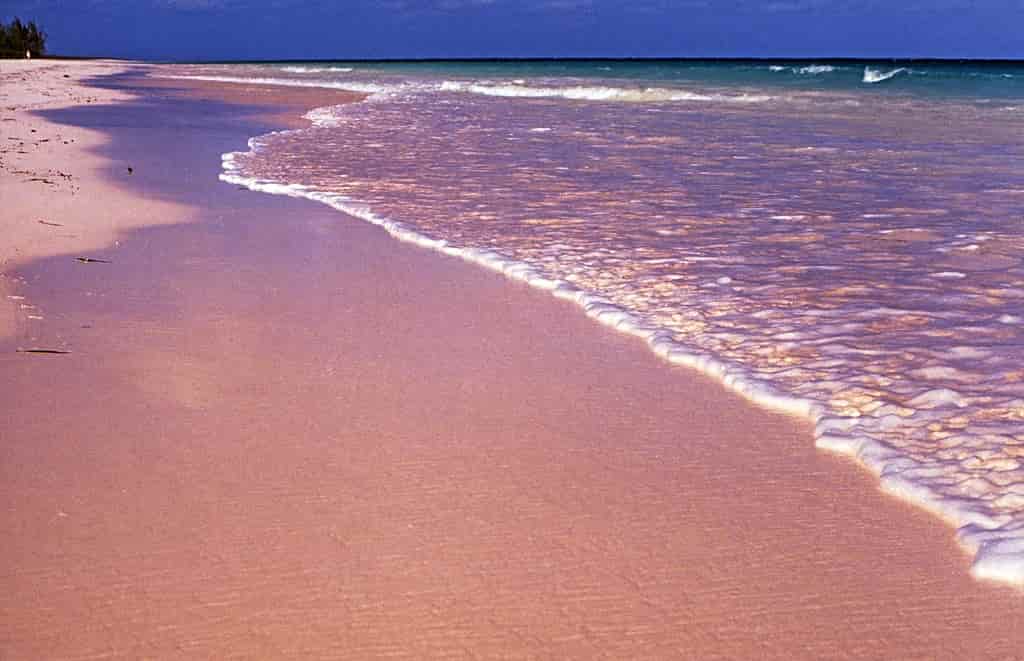
How to get there?
North Eleuthera Airport is the closest to Pink Sands Beach. Visitors can fly to the North Eleuthera Airstrip from Nassau, Bahamas, or Fort Lauderdale, Florida, and Miami, Florida. From this small airport, one can take a taxi to the ferry dock and then board a boat to Harbour Island. The car and ferry journey will take roughly thirty minutes. Tourists can also board a ferry to Harbour Island from the nearby city of Nassau (3 hours one-way) to make their way to Pink Sands Beach.
2) Glass Beach, California
The unique Glass Beach is situated in MacKerricher State Park, near Fort Bragg, California. This glossy beach, formerly a landfill, has been formed by pieces of degraded glass, discarded appliances, and garbage that residents dumped over the cliff into the ocean below for decades. That ritual was discontinued in the 1960s, and clean-up campaigns were held to reduce the size and volume of garbage. The rough edges of the remaining broken glass were eventually pounded by the Pacific waves, transforming them into small, smooth, colorful pebbles.
The beach is now littered with a kaleidoscope of multicolored trinkets that add vibrancy to the shores. Although there isn’t as much sea glass around as there used to be, you can still see the sparkle among the fine, white sand. As tempted as you may be to pick up the miniature gems, remember that removing the washed-up treasure is illegal. It is entirely safe to swim at Glass Beach, which receives thousands of visitors each day.
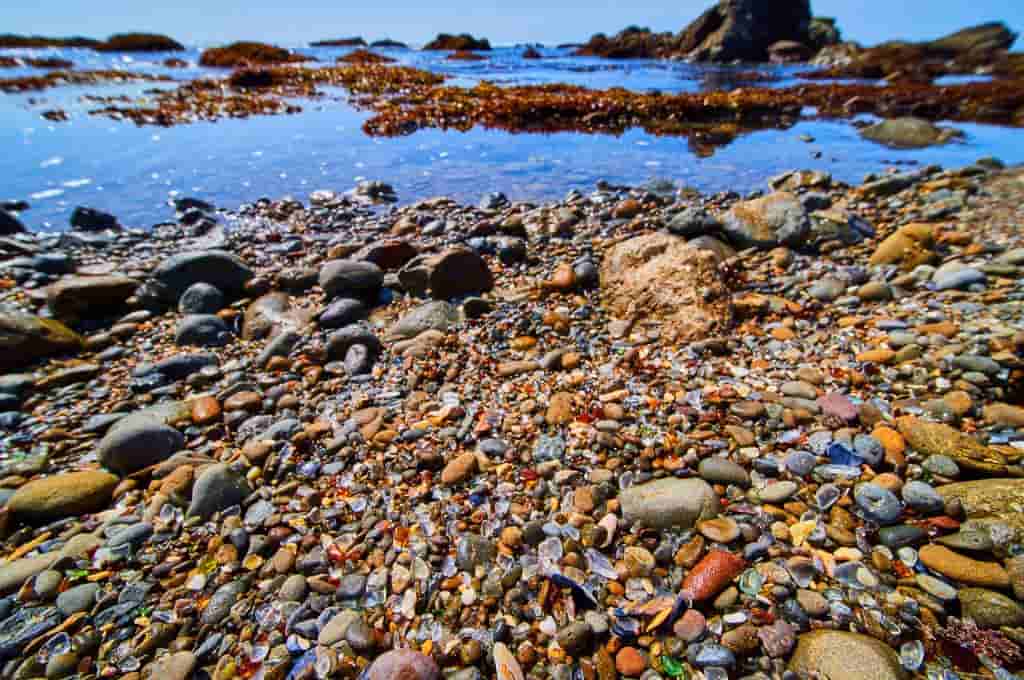
How to get there?
The nearest airport to Fort Bragg is Charles M. Schulz–Sonoma County Airport (111 miles) in Santa Rosa. Flying into Sonoma County Airport would be ideal if you can find a direct flight. The other alternative is to fly into San Francisco International Airport, which is the closest major airport to Fort Bragg. Driving from SFO to Fort Bragg will take you about 4-5 hours.
3) Bioluminescent Beach, Maldives
Stroll on the stars during your beach vacation on the shores of Ra Atoll in Vaadhoo Island (Mudhdhoo). This magical nighttime show in the Maldives was popularized by the film Life of Pi, directed by Ang Lee. The ‘Sea of Stars’ phenomenon illuminates the shore with a blue glow at night, creating an incredible shimmering effect that looks like the sea is full of stars. The luminous phytoplankton that glows and glitters on the beaches is a tiny organism called Lingulodinium polyedrum. This plankton thrives in the warm coastal waters, and the movement of the waves causes it to emit light as a defensive measure, resulting in an ethereal, surreal splendor.
The ideal time to visit the beach is during a new moon, when the sky is exceptionally dark and you can see the bioluminescence. The mysterious allure of the small island has made it a haven for honeymooners and romantics. Plan your trip between June and October for the best chances of witnessing the Sea of Stars. This bioluminescent marvel can also be experienced at the Indian River Lagoon in Florida and Mosquito Bay in Puerto Rico.
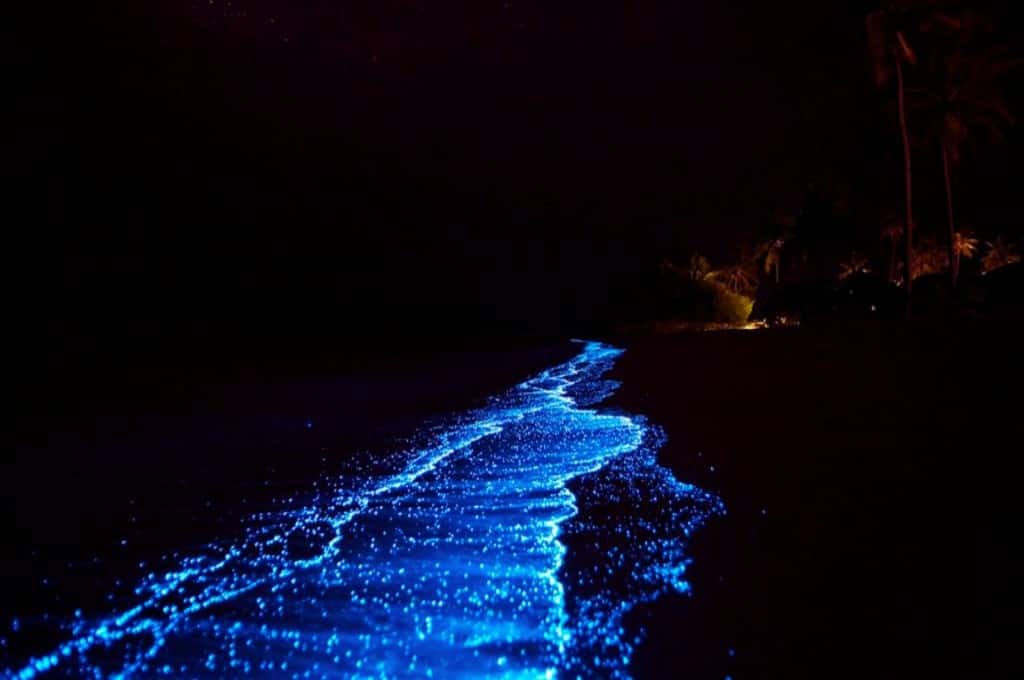
How to get there?
The island of Vaadhoo is about 8 kilometers from Male International Airport. You can board a speedboat that will take you there in about 15-20 minutes.
4) Hidden Beach, Mexico
Playa del Amor, popularly referred to as Hidden Beach and Love Beach, is a beach tucked away within a cluster of uninhabited islands near Riviera Nayarit in Mexico. This secluded beach with the unusual landscape was discovered by accident in 1990, while the Mexican government was testing bombs and blasting the canopy-hugging cavern. Today, the beach is almost invisible from the outside. It is only accessible at low tide by kayaking or swimming through a water tunnel that connects the beach to the Pacific Ocean. It is not an underwater beach, but rather an open, sun-drenched crater with the blue waters of the ocean rushing in.
A permit is required to visit the island as it is a designated nature reserve. Given that only a limited number of visitors are permitted each day, we recommend making your reservation a few days in advance, as it is extremely popular among tourists and honeymooners.
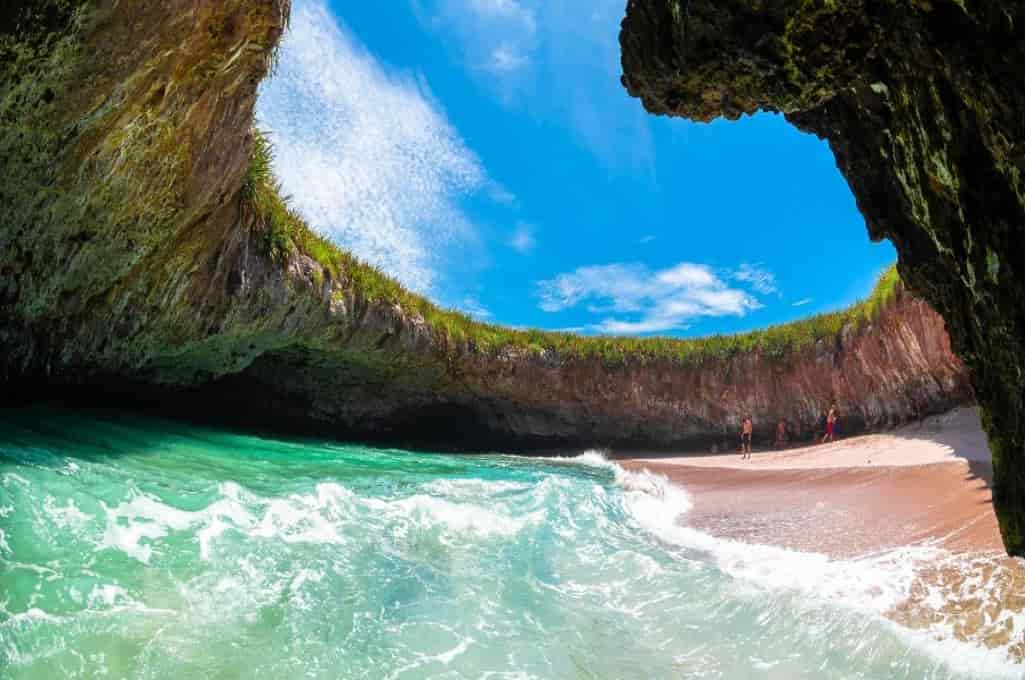
How to get there?
Visitors must take a guided tour to reach Hidden Beach, which is only accessible by boat. Numerous tour companies offer day trips from Puerto Vallarta, Nuevo Vallarta, Sayulita, La Cruz, or wherever you have chosen to stay in Riviera Nayarit. The islands are about an hour’s boat ride from the coast of Puerto Vallarta, Mexico. To get to the beach from the boat, you’ll need to swim or kayak through the water tunnel.
5) Hot Water Beach, New Zealand
What could be more unique than a geothermal mineral spa right on the beach? Hot spots and geothermal vents abound in New Zealand, creating a truly unique environment. Hot Water Beach on the Coromandel Peninsula does not appear to be particularly special at first glance. If you go two hours before or after low tide, you’ll see a swarm of people digging holes in the golden sand and lounging in their makeshift hot-water tubs. Subsurface hot water springs bubble up through the sand at Hot Water Beach, revealing warm, mineral-rich waters that reach temperatures of up to 150 degrees. So, grab some shovels and set up your own hot water mineral spa by releasing groundwater. Reap the benefits of your efforts by soaking and relaxing while admiring the breathtaking seaside views. The beach is perfect for families looking for a relaxing day.
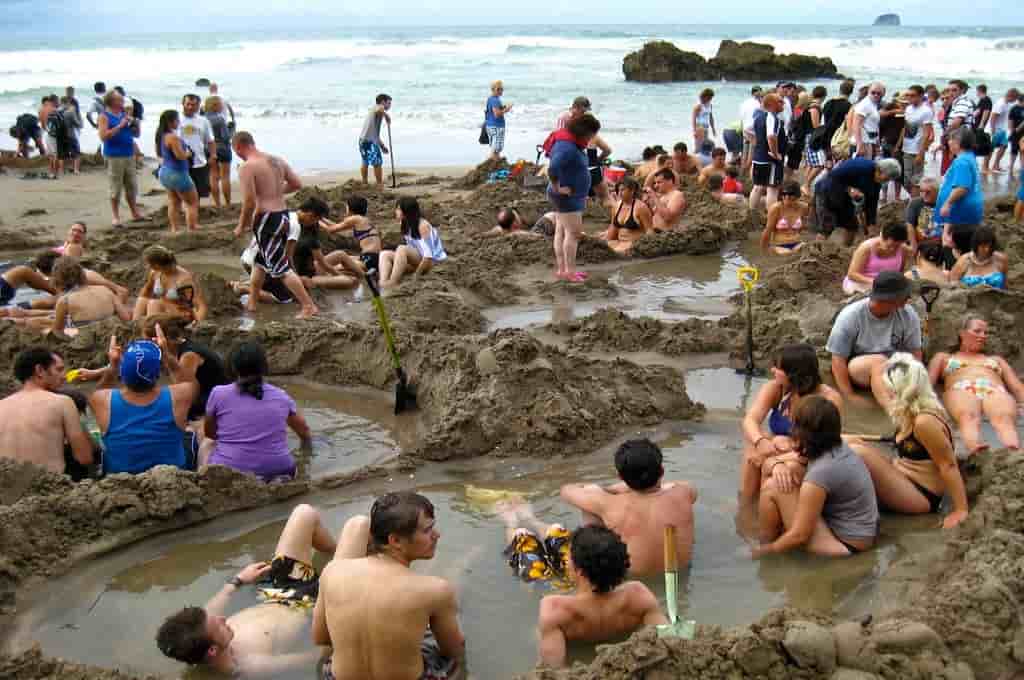
How to get there?
Hot Water Beach is located in New Zealand, 175 kilometers from Auckland. The drive from Auckland takes about 2 hours.
6) Maho Beach, Caribbean Islands
The Caribbean is best known for its beaches, which are stunning but not particularly special—unless you visit the Maho beach on the island of Saint Martin. People travel here to capture images of planes flying very close to the sea. Maho Beach is located right next to Princess Juliana International Airport (Maho), and creates a buzz whenever an airplane lands at the beach. The airport runway is shorter than usual, so planes fly super low as they prepare to land. Loud engine noises and strong wind gusts kicking up sand may not be your ideal beach experience, but if you want to feel the thrill of a huge aircraft flying right over your head, you must visit the ‘Airport Beach’. Kids and aviation enthusiasts love the unique beach.

How to get there?
Travelers can fly into the adjacent Princess Juliana International Airport and walk to Maho Beach in about two minutes. If you are on a cruise ship, you can reach Maho Beach from the St. Maarten Cruise Port in about 30 minutes by taxi/bus/water taxi.
7) Pig Beach, Bahamas
This unique beach deserves a spot on our list because it’s not every day that you can swim with pigs. Pig Beach stretches along Big Major Cay on an uninhabited island in the Exumas. If it weren’t for a herd of wild pigs, this would be a typical Caribbean beach teeming with marine life. The island is home to a colony of ‘swimming pigs.’ Nobody knows how they got there, but they are not native to the island. They run around the beach and frequently dive into the sea to swim. People come from all over the world to spend time with them. The pigs are cared for by volunteers, but you can offer them some fresh fruits. The unique beach can only be reached by boat, so you’ll have to join a boat tour to visit it.

How to get there?
There are several ways to get to Pig Beach, but they are all part of a tour. Staniel Cay is the main tourist hub and point of transit for the majority of tourists, as it is the closest airport and fully operational marina to Pigs Beach. Bahamas Air Tours operates daily flights between Nassau and Staniel Cay.
8) Jökulsárlón Beach, Iceland
Featuring in several Hollywood movies, Jökulsárlón is a vast glacier lake located on the edge of Vatnajökull National Park in southeastern Iceland. It also has one of the most bizarre beaches you will ever see in your life. Massive blocks of ice break off from the nearby Vatnajökull Glacier and fall into the Jökulsárlón lagoon, where they drift atop the water. Some of the lake’s snowy-white icebergs wash ashore on Jökulsárlón Beach, creating a dramatic contrast with the black volcanic sand. The gorgeous beach is also known as Diamond Beach because the glassy chunks of ice that litter the beach sparkle and shine when the light is just right. The incredible sight will undoubtedly take you to a different planet. The simplest way to see Jökulsárlón Beach is to ride an amphibious bus along the beach before sliding into the sea and cruising through the gigantic icebergs.
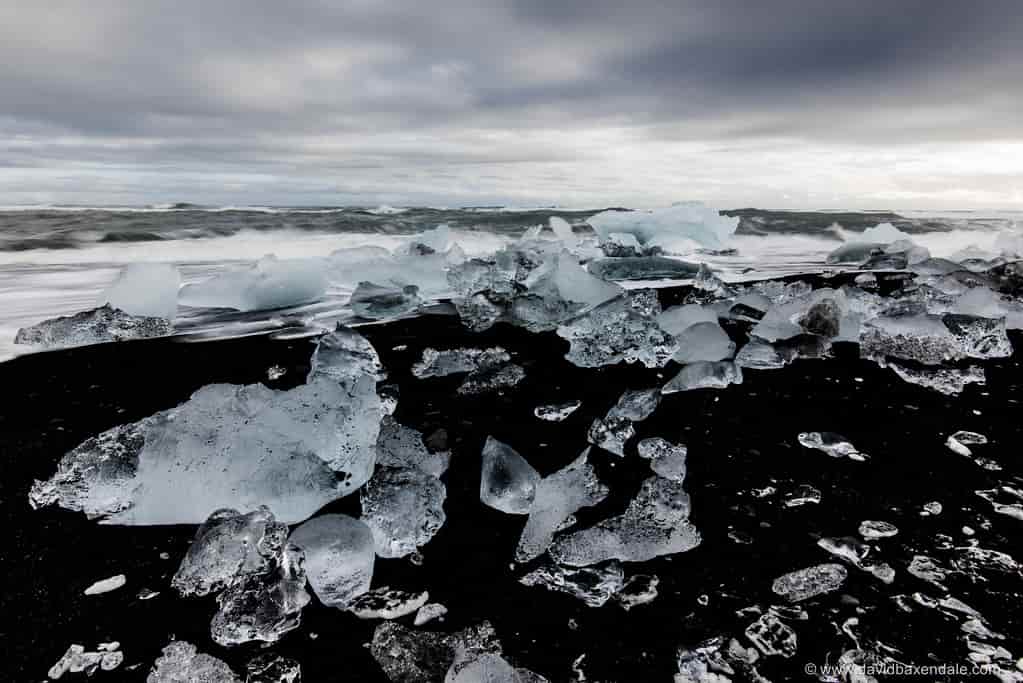
How to get there?
Jökulsárlón Beach is a five-hour drive from Reykjavik, and the route takes you past some incredible landscapes. The trip takes around three hours from Vik and just over an hour from Hofn. Guided tours are available for those who prefer not to drive.
9) Shell Beach, Australia
The brilliant white sandy beach at Shark Bay in Western Australia is packed with cockle shells and is a sight to behold. The enormous collection of seashells here is due to local cockle clams flourishing in the saline waters near the beach. The shell bed stretches for 40 miles along the coast and is made up of trillions of pearl-white shells, all from the same type of animal. The tiny, delicate shells are believed to go down up to 10 meters below the surface. Shell Beach is one of the world’s saltiest beaches. The high salinity allows the seashells to proliferate unabated by their natural predators. A barefoot stroll may not be a good idea, as the sharp edges of the shell can hurt your feet. The large quantity of salt in the water makes it very buoyant (similar to the Dead Sea) and allows for easy floating.
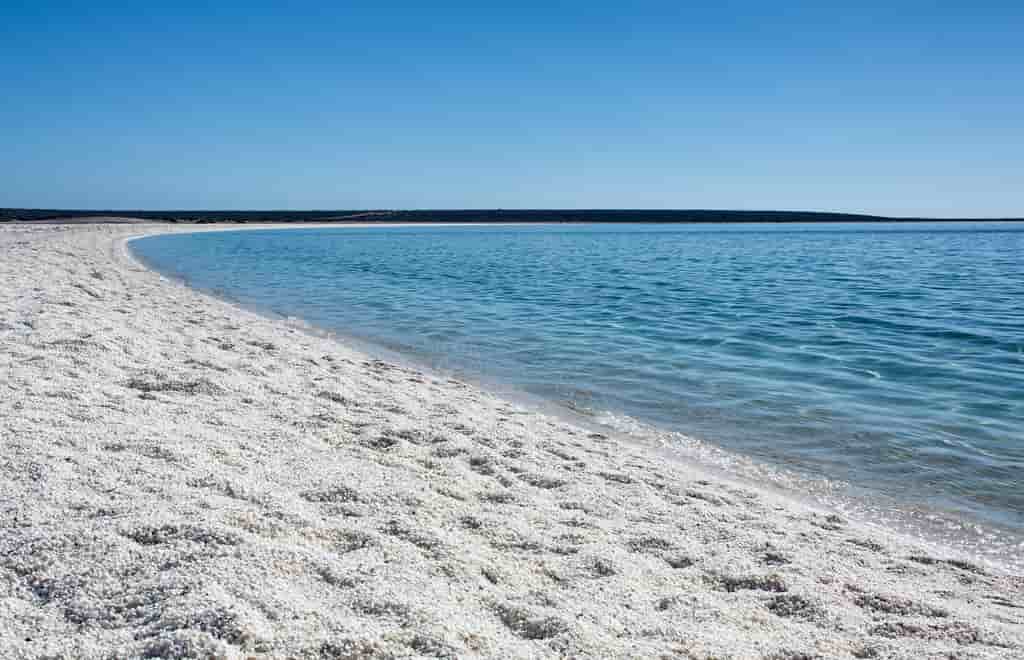
How to get there?
Shell Beach is about 30 30-minute drive from Denham. You can fly to Denham from either Perth or Sydney.
10) Cathedral Beach, Spain
Spain is home to quite a few cathedrals, but there is only one Cathedral Beach, also known as Playa de Las Catedrales. This dramatic 1.5 km stretch of beach near Ribadeo is lined with a stunning row of giant underwater arches and intricate Gothic-style caves. The formations are a natural work of art, and the towering arches and flying buttresses are as exquisite as any cathedral built by man.
The spectacular crevices, stone pillars, and caves of this beach were sculpted over thousands of years by the raw power of the Atlantic Ocean and the relentless wind. Some of the arches are more than 90 feet tall, and what appear to be tiny cracks are actually openings to vaulted sea caves sculpted out of the rock. The beach is an absolute must during low tides when the vast rock formations become visible. During high tide, the area is completely submerged and can be explored by diving and snorkeling. Standing on Cathedral Beach and looking through its natural corridor is an experience unlike any other. Keep an eye on the tide because it can catch you off guard.
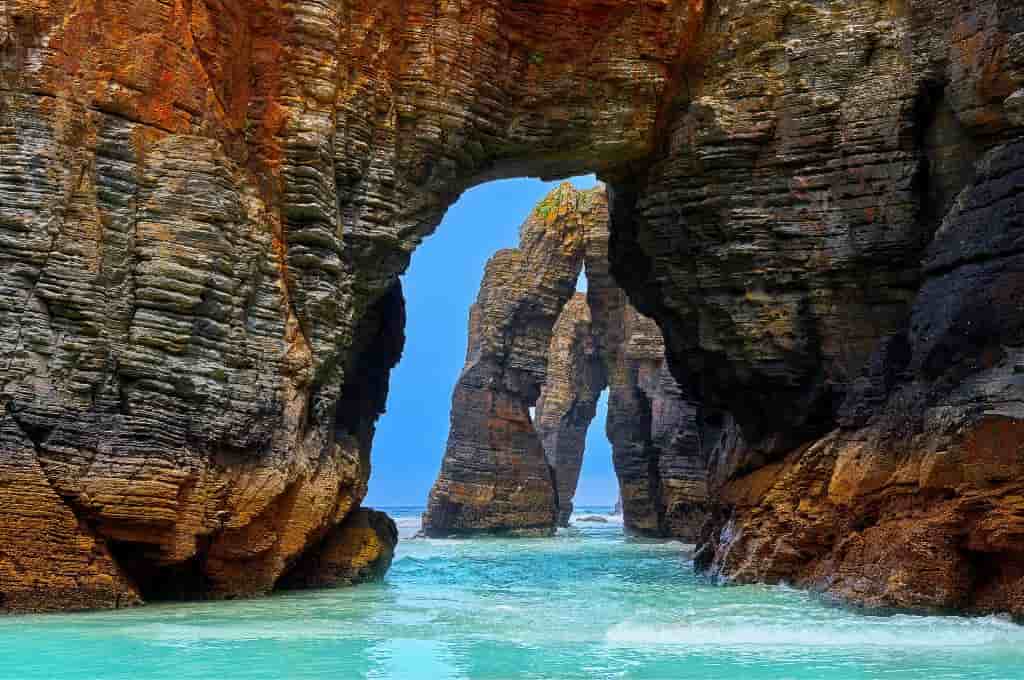
How to get there?
Cathedrals Beach is located in the province of Lugo, about 10 kilometers from Ribadeo. The nearest airport to Ribadeo is an hour’s drive away in Asturias. The airports of Corunna and Santiago are 90 minutes away. The more convenient option is to catch a train or bus to Ribadeo from the nearby towns.
11) Green Sand Beach, Hawaii
Located near the southernmost point of Hawaii, the Green Sand Beach is carpeted with green sandbanks. The distinctive verdant green color of Papakolea Beach is due to the abundance of the crystal mineral olivine mixed with the fine sand. The green-colored sand was deposited by the age-old volcanic activity of Mauna Loa, the world’s largest volcano. Olivia is a type of magnesium mineral formed when lava cools in seawater. Because olivine silicates are heavier than other volcanic debris, they do not wash out to the seas as easily as lighter crystals. So, as the waves sweep away the rest, the beach becomes greener.
Papakolea Beach has a slightly otherworldly appearance due to its green sand and rocky cliffs. However, to reach this surreal beach, one has to trek 2.5 miles along rugged sea cliffs. Green Sand Beach is one of only four beaches in the world with olive hues. The other three are Punta Cormorant in the Galapagos Islands, Hornindalsvatnet in Norway, and Talofofo Beach in Guam.
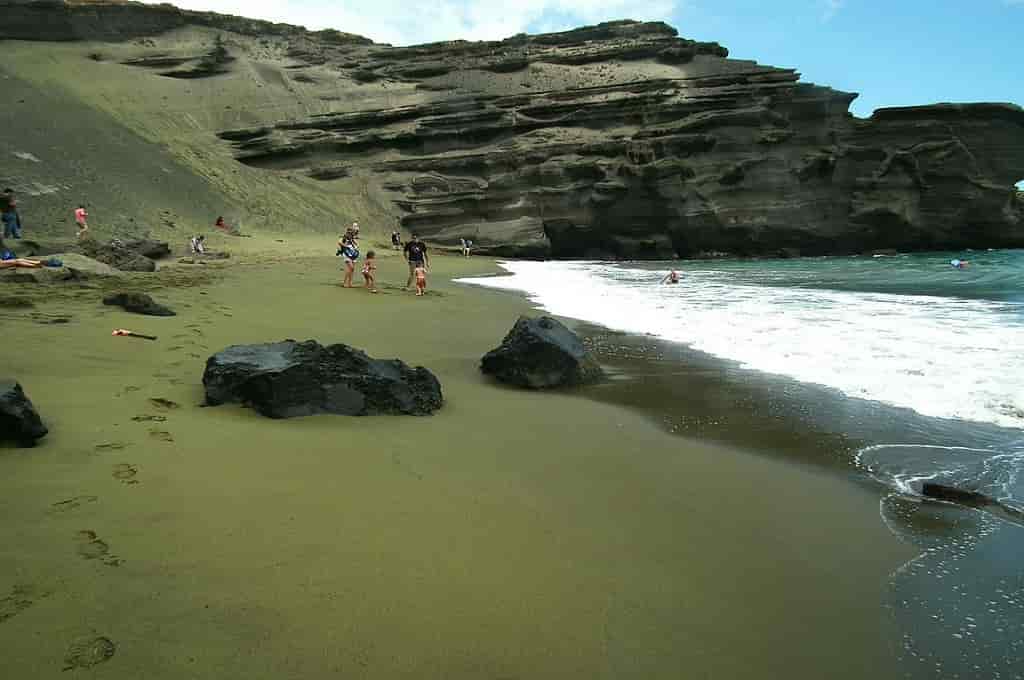
How to get there?
Papakolea Beach is 103 kilometers from the popular tourist resort town of Kona on the Big Island, and the drive takes 1 hour and 35 minutes. The closest you can get is approximately four kilometers from the beach. After that, you can hike or take one of the 4-wheel-drive shuttles that circulate around the parking lot and offer a ride to Green Beach for a few bucks.
12) Koekohe Beach (Moeraki Boulders), New Zealand
If you’re looking for a unique beach destination, Koekohe Beach on New Zealand’s Otago Coast should be on your list. Moeraki Beach is best known for its massive spherical boulders scattered across the beach. Each rocky sphere is an unusual shape and size, weighing several tons and standing up to two meters tall. The mysterious boulders on the beach look out of place, but they weren’t put there by humans. Scientists believe the huge boulders are calcite concretions that formed approximately 5 million years ago. Years of calcification, weathering, and shore erosion gradually revealed and shaped the boulders. The Moeraki Boulders are sometimes referred to as “Dragon’s Eggs” or “Dinosaur’s Eggs” because of the way their calcified outer layer has cracked open on top. The best times to visit Koekohe Beach are early morning or late afternoon when the shores are bathed in soft light.
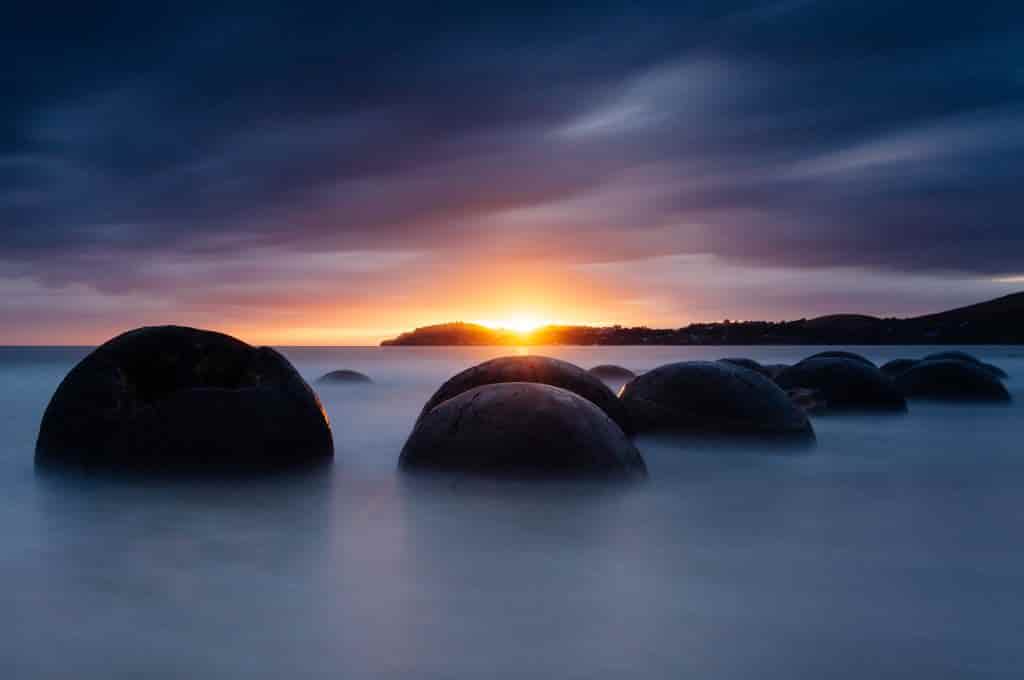
How to get there?
The boulders can be found on Koekohe Beach, between the towns of Moeraki and Hampden. The Moeraki Boulders are about an hour’s drive from Dunedin and a thirty-minute drive from the town of Oamaru.
13) Benagil Sea Cave Beach, Portugal
The Algarve coast is primarily composed of limestone, which is easily eroded by tidal forces and can form remarkable structures. Benagil Cave is a vast sea cave located on the Algarve coast of Portugal. The limestone cliffs have eroded over thousands of years, leaving a mysterious grotto where the only light comes from a giant skylight. The naturally occurring sea cave with the beach nestled inside creates an intriguing look that you may not have seen before.
The openings of the sea cave allow you to relax on the beach, dip your feet in the sea, and walk around exploring the intricate rock formations. When daylight streams through the ceiling, it reflects off the golden sand and the azure water that flows into the cave through the archways. The amber hues and patterns on the cave’s layered walls tell their own story about the centuries-long erosion by sea and wind. The Benagil Sea Cave Beach is secluded mainly because many people do not often visit it. Dolphins, along with other sea creatures, are frequently spotted in the crystal-clear water.
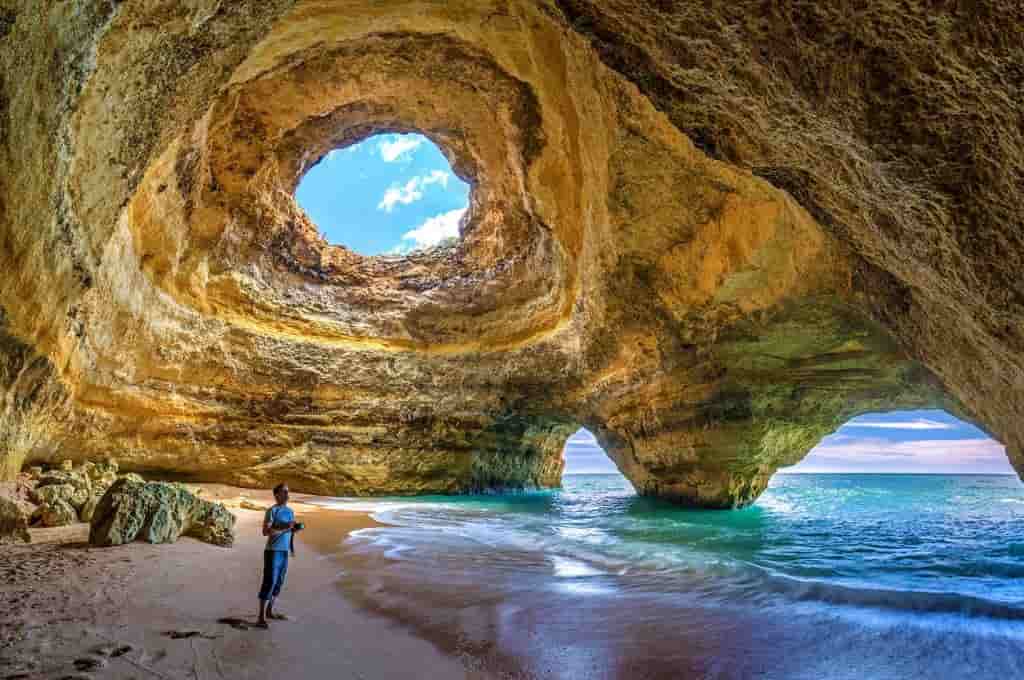
How to get there?
The Benagil Cave is near the village of Benagil in the Lagoa region of southern Portugal. Keep in mind that the caves are only accessible by sea. Taking a boat tour from Albufeira or Portimão, the two largest towns nearby, is the best way to reach the Benagil Caves. Boat trips are also available from Lagos, Faro, and Vilamoura. To enter the cave, you must swim, kayak, or paddleboard, as the arches are very low.
14) Scala Dei Turchi, Italy
Although Italy has no shortage of beautiful beaches, the Scala Dei Turchi on the coast of Realmonte in Sicily should be visited for its unique beauty. The beach is crowned by naturally formed white, rocky cliffs that look like a staircase. The terraces are made of white marl limestone, which is soft enough for the elements to carve these brilliant white stairs. The cliffs cascade down in a staircase pattern to form a small headband where they meet the sea. Scala Dei Turchi is right on the shoreline, and there are two sandy beaches on either side of the cliff. The vista of the breathtaking cerulean sea waters framed by a flawless white cliff is unrivaled. Scala Dei Turchi translates to “Stairs of the Turks.” The name refers to the time when Turkish and Arab invaders sought refuge in the bay.
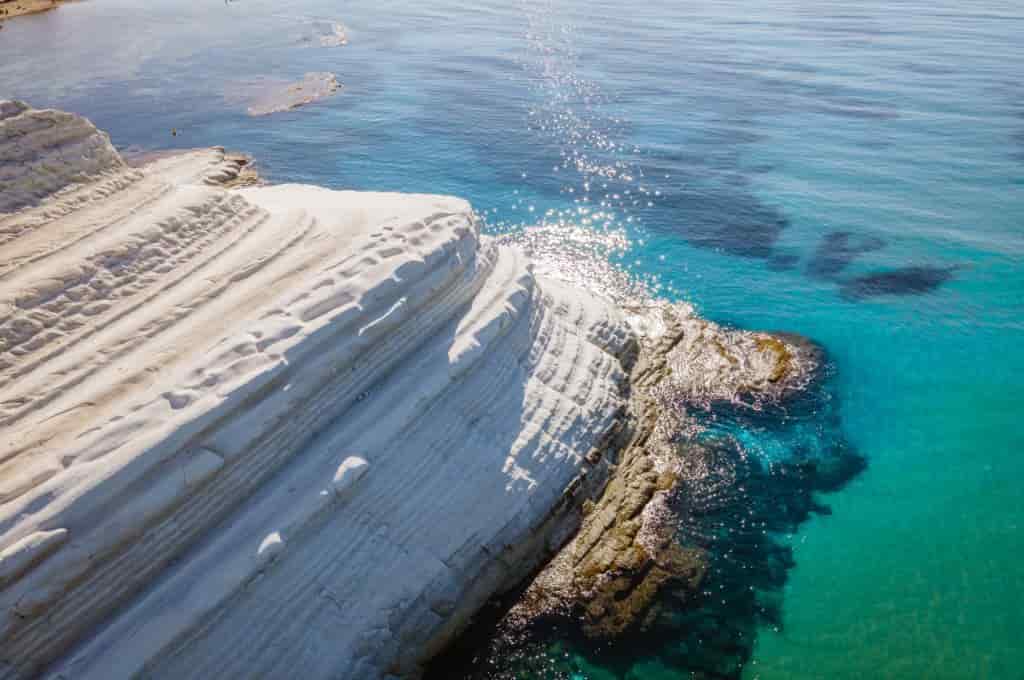
How to get there?
Scala Del Turchi is situated between Realmonte and Porto Empedocle, approximately 20 minutes from the town of Agrigento on Sicily’s southern coast.
P.S.: Access to Scala Dei Turchi was closed in 2022. The site is now guarded to prevent unauthorized visitors from accessing the cliffs. Thankfully, the Stair of the Turks can still be seen from afar.
15) Giant’s Causeway Beach, Ireland
The Giant Causeway in Northern Ireland is a fascinating seaside destination as well as a UNESCO World Heritage Site. The beach has a geologic origin and is riddled with odd rock formations and intriguing fissures. The unusual beach in Northern Ireland was formed over 50-60 million years ago by a volcanic fissure bursting into the sea. When the basaltic lava plateau cooled, it rose to the surface and cracked into thousands of hexagonal rock formations of varying heights. The tallest column stands about 36 feet tall.
The collection of basalt columns and boulders, interlinked in hexagonal, scale-like patterns, is impressive due to their shape and precision. Every year, throngs of visitors flock here to enjoy the unique beach and the jaw-dropping views of the North Atlantic Ocean. The Giant’s Causeway Beach has been shrouded in mythology. According to legend, the columns are the remains of a causeway built by the giant Finn MacCool to reach his beloved giantess in Scotland, hence the strange name.
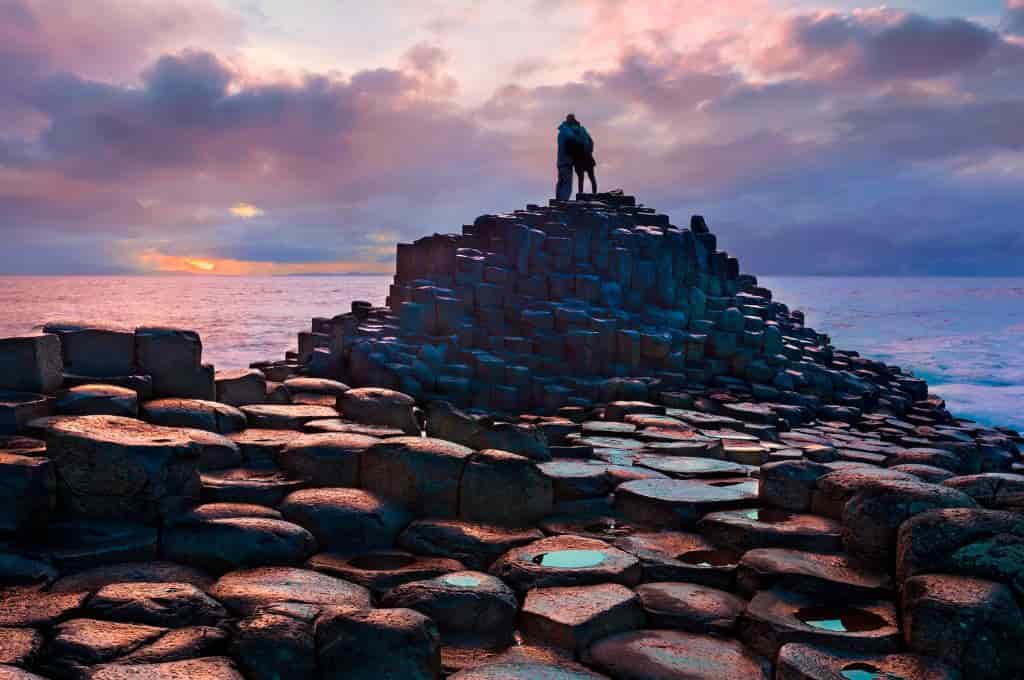
How to get there?
The direct route from Belfast to the Giant’s Causeway takes roughly an hour, but the Causeway Coastal Route is far more scenic. The landmark is about a 3-hour drive from Dublin.
